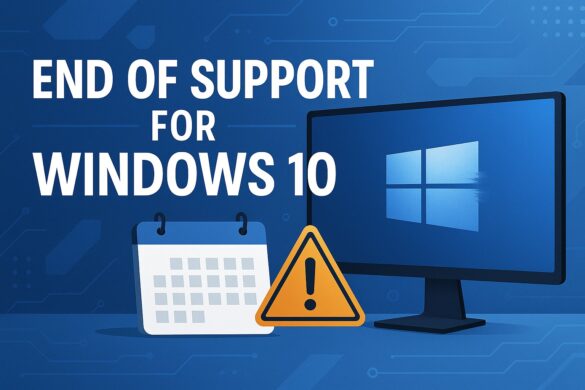How To Protect Your Organization For Cyber Breaches When Employees Are Terminated: Best Practices and Strategies
When an employee leaves your organization, ensuring they no longer have access to your systems is crucial. Immediately revoke access to all company systems and networks, including email, cloud services, and internal platforms. This step helps prevent unauthorized access or potential data breaches.
You must also communicate the termination to your current employees and mandate password changes for those with shared accounts. These simple actions can help maintain a secure environment and mitigate risks associated with former employees.
Additionally, a comprehensive checklist for the employee offboarding process must be created and followed. This ensures no missed steps and all digital and physical assets are secured and returned. A well-structured policy can safeguard your company against potential threats from former employees.
Key Takeaways
- Revoke system access immediately upon termination.
- Communicate terminations and mandate password changes.
- Use a comprehensive checklist for offboarding.
Understanding the Risks
When an employee is terminated, significant cybersecurity risks need to be addressed. These include potential data breaches and vulnerabilities that may arise post-employment.
Data Breach Consequences
A terminated employee might have access to sensitive information. If this information is leaked or misused, it could lead to severe data breaches, exposing trade secrets, customer data, and other confidential information.
The financial impacts include costly legal battles and fines. There can also be reputational damage. Customers lose trust, and it can take years to rebuild credibility.
To mitigate these risks, companies need to revoke all access permissions immediately. This includes deactivating passwords and retrieving company-owned devices.
Potential Vulnerabilities Post-Employment
After an employee leaves, there are several vulnerability points. First, the departing employee may still have access to company emails, cloud services, or other digital platforms.
Employees may have unauthorized copies of sensitive data. They might have stored important files on personal devices or cloud accounts.
Close monitoring of systems after termination is crucial. Ensuring that all company data is secure from potential breaches is vital. Regularly review and update security protocols to address any gaps.
Cyberattacks targeting people rather than systems are a significant concern. Training remaining staff on recognizing insider threats can improve your organization’s overall security posture.
Creating Robust Termination Procedures
When employees are terminated, it is essential to establish clear procedures to protect your organization from potential cyber breaches. This involves creating detailed checklists and understanding legal implications.
Developing a Checklist
A well-structured checklist ensures all steps are followed to secure your systems and data. First, disable the terminated employee’s access to all systems immediately. This prevents any unauthorized access. Change shared passwords that may have been used by the employee.
Next, retrieve all company-owned devices, such as laptops, tablets, and smartphones. Check for any external storage devices, like USB drives. Finally, inform your current staff about the termination. This helps maintain security and ensures that everyone is aware of the situation.
Legal Considerations
Understand the legal requirements for employee termination procedures. Ensure your actions comply with relevant laws, such as Sarbanes-Oxley, the Patriot Act, and HIPAA. These regulations may influence how you handle data and manage employee access after termination.
Additionally, detailed records of all actions taken during the termination process must be kept. This documentation might be necessary for legal purposes. Consult with legal professionals to ensure your procedures comply with current laws and regulations.
Securing Digital Assets
When employees are terminated, it is crucial to secure your digital assets to prevent unauthorized access and data breaches. Focus on revoking access, managing passwords, and deactivating user accounts to safeguard your organization.
Revoking Access
When an employee leaves, immediately revoke access to all systems and data. This includes removing their privileges from corporate email, internal databases, and cloud storage.
Use access management tools to track and control who can access specific assets. Implement role-based access control (RBAC) to ensure employees have only the permissions necessary for their roles.
Create a checklist of all systems the terminated employee had access to. Ensure each access point is disabled promptly. This prevents potential security breaches arising from delayed or missed revocations.
Password Management
Update passwords for shared accounts and reset any passwords the terminated employee could have known. Using strong, unique passwords prevents unauthorized access.
Implement multi-factor authentication (MFA) to add an extra layer of security. MFA requires the employee to verify their identity using a second method, making it harder for unauthorized users to gain access.
Regularly review and update your password policies. Ensure employees use password managers to store and manage their credentials securely. This practice reduces the risk of weak or reused passwords that could compromise your digital assets.
Deactivating User Accounts
Deactivate the user accounts of terminated employees immediately. This action includes deactivating accounts on corporate networks, SaaS applications, and third-party services.
Use an automated account deactivation tool to streamline this process. Automation helps ensure that no accounts are missed and that deactivation is timely.
Audit user accounts regularly to identify and remove any active accounts that should be deactivated. Perform periodic checks to verify that no former employees have access to your systems, reducing the threat of unauthorized access to your digital assets.
Physical Security Measures
Protecting your organization’s physical assets during employee termination involves several key tactics. You need to focus on retrieving company devices and securing physical documents.
Retrieving Company Devices
When an employee is terminated, it is crucial to collect all company-owned devices. This includes laptops, smartphones, tablets, and other equipment containing sensitive information.
Ensure you have an inventory list of all devices assigned to employees. Update this list regularly. When retrieving devices, thoroughly check to confirm all equipment is returned.
It’s important to conduct a security audit on returned devices. To prevent unauthorized access, wipe all data and reset devices to factory settings. This step protects your organization from potential data leaks.
Clear policies can make the retrieval process efficient. Communicate these policies during employees’ onboarding and exit interviews. Use secure, documented handover procedures to track device returns.
Securing Physical Documents
Physical documents can contain sensitive information that must be protected. After an employee leaves, access to all physical documents must be revoked immediately.
Keep a record of which documents are accessible to which employees. Regularly audit these records to ensure they are up-to-date.
Implement robust access control systems in areas where physical documents are stored. Use key card door locks, security cameras, and restricted access zones to ensure only authorized personnel can reach sensitive documents.
Consider digitizing physical documents and storing them in secure, encrypted digital formats. This reduces the risk of physical document mishandling. If you must keep physical documents, use fireproof and tamper-proof storage solutions.
Train your staff on document security procedures. Ensure they understand the importance of protecting sensitive information and the steps they should take when an employee leaves.
Focusing on these two areas can better safeguard your organization against potential breaches resulting from employee terminations.

Employee Exit Interviews
Conducting effective exit interviews and ensuring proper information handover is crucial to protect your organization from cybersecurity risks when employees leave.
Conducting Effective Interviews
Exit interviews provide a structured way to gather insights and ensure departing employees understand their responsibilities. To conduct an effective interview, prepare a standardized list of questions covering the employee’s reasons for leaving and their access to company systems.
Ask about any unresolved issues and request honest feedback. Ensure the discussion includes reminders about confidentiality agreements and company policies. It’s also helpful to document the interview for future reference and analysis.
Key Points to Cover:
- Reasons for leaving
- Access to systems and data
- Confidentiality agreements
Information Handover
Proper information handover is essential to maintaining security. This involves collecting all company property, such as laptops, mobile devices, and access cards. Make sure to revoke all access to company networks and systems promptly.
Conduct a thorough check to ensure the employee can no longer access sensitive information. This process includes changing passwords they had access to and deactivating accounts. Provide clear instructions on transferring ongoing projects and important files to their successors.
Steps to Follow:
- Collect company property
- Revoke system access
- Change passwords and deactivate accounts
For more detailed processes for conducting these steps, refer to the guidelines on IT Security for Employee Termination and Information Security and Employee Exit Checklists.
Ongoing Monitoring and Response
Ensuring your organization is continually monitored and swiftly responding to incidents is key in preventing security breaches when employees are terminated. Critical areas include setting up alerts and having a robust incident response plan.
Setting Up Alerts
Setting up alerts helps you detect unusual network activities in real-time. These alerts can notify you of unauthorized access attempts, changes in permissions, or data transfers involving sensitive information.
You can create thresholds for certain actions, such as failed login attempts or file accesses, to trigger alerts. For example, an alert should be sent immediately if an ex-employee’s credentials are used to access your systems.
Automated tools can help manage these alerts effectively, reducing the chance of human error. It’s crucial to regularly update and fine-tune these alerts to ensure they are effective and reduce the number of false positives.
Incident Response Plan
An incident response plan outlines the steps to take when an alert is triggered. This plan should include identifying the breach, containing it, eradicating the threat, and recovering from the incident.
Clear roles and responsibilities should be assigned to your security team, ensuring everyone knows their tasks during an incident.
Test and update your incident response plan regularly to keep it effective. Simulating different breach scenarios can help your team stay prepared and improve their response times.
Including contact information for internal and external stakeholders, legal teams, and cybersecurity experts in your plan can streamline communication during a breach.
Implementing these practices helps maintain robust security even during employee transitions.
Training and Awareness
Training employees regularly and creating a secure work environment is crucial to protecting your organization from cyber breaches, especially when employees are terminated.
Regular Security Training
Regular security training helps employees recognize and respond to cyber threats effectively. Training should include:
- Phishing simulations: Test employees’ ability to spot and avoid phishing emails.
- Password management: Teach the importance of using strong, unique passwords and regularly updating them.
- Incident reporting: Ensure employees know how to report suspicious activities quickly.
Frequent refreshers, as often as every quarter, keep the team up-to-date on the latest threats and techniques. This approach helps build a resilient workforce to prevent data breaches and cyber-attacks.
Cultivating a Secure Work Environment
Cultivating a secure work environment involves more than just training. It’s about creating a culture where security is prioritized.
- Clear policies: Provide clear policies on data protection and the steps employees should take if they encounter security issues.
- Open communication: Encourage employees to report potential threats without fear of blame. An open line of communication builds trust and ensures issues are addressed promptly.
- Access controls: Limit access to sensitive information based on employee roles. Review and update these controls regularly, especially when employees leave the organization.
Fostering a positive security culture minimizes risks and ensures that employees understand the critical role they play in protecting your organization.
Continuous Improvement of Security Protocols
Enhancing your organization’s security protocols involves regularly evaluating current policies and integrating advanced technologies to safeguard against cyber breaches.
Evaluating Existing Policies
Review and assess your current security policies regularly. Look at how effective they have been in preventing breaches. Gather data from recent incidents and determine where weaknesses may exist.
Involve different departments in this process. Each department might have unique insights into potential vulnerabilities. For instance, HR might notice patterns in termination processes that create security gaps.
Update your policies based on this feedback. Include clear guidelines on how to handle data and access for terminated employees. Adjust these policies continuously in response to new threats and business changes.
Integrating New Security Technologies
Stay up-to-date with the latest security technologies. New tools can provide enhanced protection against cyber threats. For instance, advanced encryption methods can more effectively secure sensitive data.
You should adopt multi-factor authentication (MFA) and endpoint detection and response (EDR) systems. MFA adds an extra layer of security, while EDR monitors and responds to suspicious device activities.
Consider cloud-based security solutions. These can offer scalability and flexibility, making it easier to manage security across different parts of your organization. Continuously train your IT staff to ensure they can implement and maintain these advanced technologies properly.
Regularly update software and systems. Outdated technology can create vulnerabilities. Ensure all devices and applications run the latest security patches and updates.
Contents
- 1 How To Protect Your Organization For Cyber Breaches When Employees Are Terminated: Best Practices and Strategies
- 2 Understanding the Risks
- 3 Creating Robust Termination Procedures
- 4 Securing Digital Assets
- 5 Physical Security Measures
- 6 Employee Exit Interviews
- 7 Ongoing Monitoring and Response
- 8 Training and Awareness
- 9 Continuous Improvement of Security Protocols



